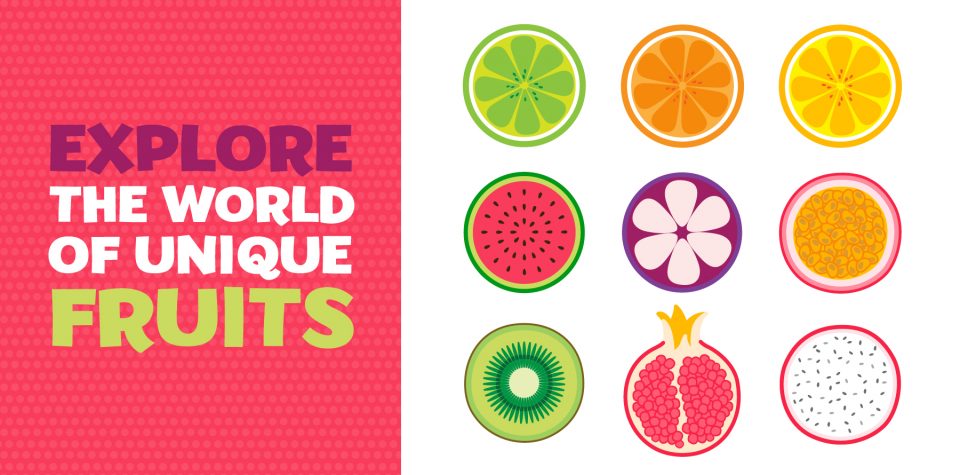
Tour the World Through Unique Fruits
Take a tour around the globe as you read about these unique fruits. With spiky exteriors, scaly skins, and bubbly insides, these fruits are a far cry from your average apples and bananas. Though these fruits are scattered throughout the globe, many can be found in specialty grocery stores. We challenge you to try something new today, namely these fruits! What better way to immerse yourself in new cultures than through food?
Rambutan
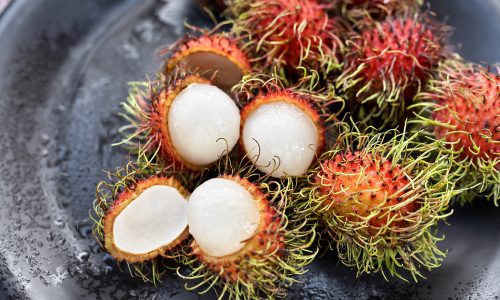
Rambutan is a hairy, ping-pong ball-sized fruit native to Malaysia. True to its name, the fruit is covered in tiny hairs (in Malay, rambut means “hair”). Rambutan has a sweet, white flesh similar to that of the lychee fruit. Juicy and delicious, rambutan is often eaten fresh, tossed in salad, or used to garnish a fancy drink.
Durian
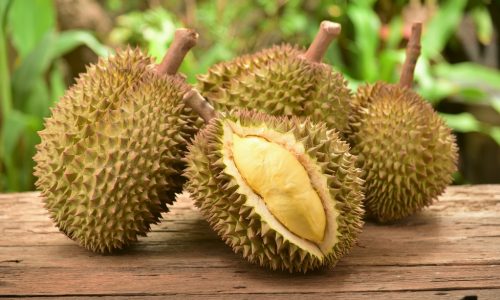
Durian is a spiky, volleyball-sized fruit native to Southeast Asia. It is most famous for its pungent odor, which is often compared to rotting food or garbage. Though the smell may be off-putting to foreigners, durian is a beloved delicacy in many parts of Asia. Durian trees also don’t start bearing fruit until they are about 10 years old, making their fruit a prized possession.
Kiwano
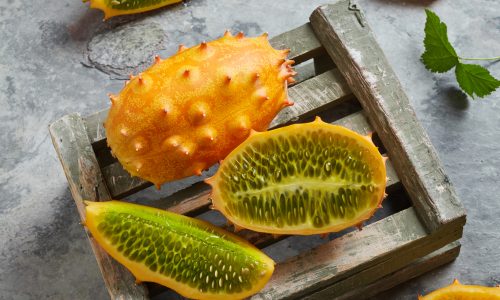
Also known as the horned melon or African cucumber, the kiwano fruit is a brightly colored beauty, decorated with vibrant yellows, oranges, and greens. The fruit is native to sub-Saharan Africa but is now also grown in California and New Zealand. Kiwano is often described as tasting like a mix of cucumber, banana, and lemon, and its refreshing flavors are perfect for many recipes.
Buddha’s Hand
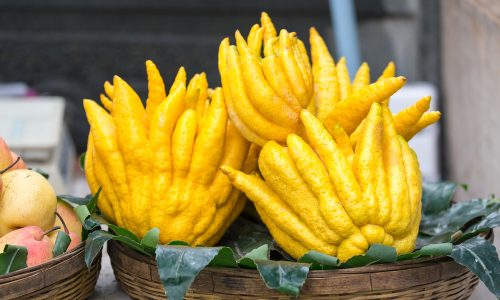
This hand-y fruit, native to southwestern China and northeastern India, is used more frequently as a decoration than it is eaten. Buddha’s hand is prized for its fragrant aroma that smells like violets, and many people use it as a decoration in their homes. Though its juiceless flesh is not often eaten, Buddha’s hand has a thick yellow rind that is sometimes used to make jam or flavored drinks.
Noni Fruit
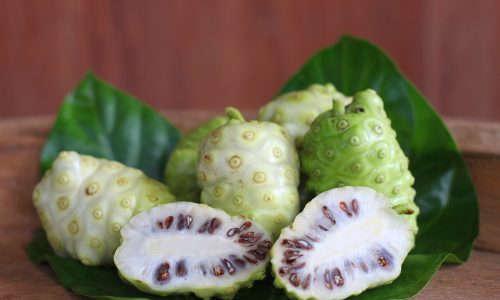
You may not want to eat noni fruit outright, but you’ll definitely want to add its juice to your smoothie! Many people describe noni fruit as tasting earthy and bitter, but because the fruit is full of beneficial antioxidants, fatty acids, fiber, vitamins, and minerals, it is commonly eaten for its health benefits. This power-packed fruit is native to Australia, Asia, and the Polynesian Islands.
Finger Limes
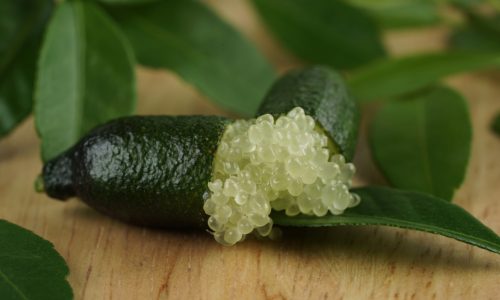
Australian finger limes are nature’s caviar! Cut open, these fruits are full of small, bulbous pearls that are literally bursting with flavor. The tiny beads taste similar to regular limes, and many people like to sprinkle them on top of a salad or stir them into a zesty drink.
Salak
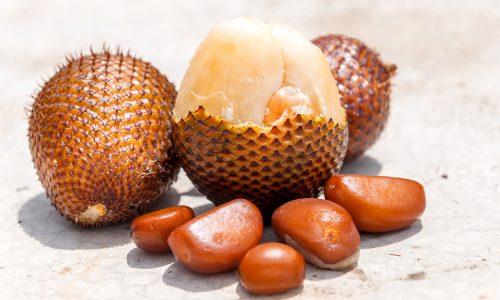
Salak, also known as snake fruit for its scalelike skin, is commonly enjoyed throughout Southeast Asia. When peeled, the fruit looks like cloves of garlic. Salak has a hard, crunchy texture and tastes like a combination of honey and pineapple.
Scuppernongs
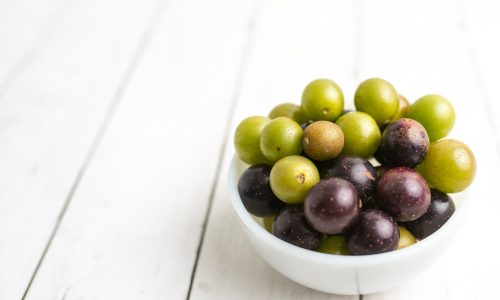
Scuppernong grapes are large round grapes, averaging a size of two to four centimeters in diameter. They are named after the Scuppernong River in North Carolina, whose name comes from an Algonquin Indian word meaning “sweet bay tree.” These humongous grapes are juicy and ridiculously sweet, making it the perfect grape for jellies, syrups, and drinks.
Langsat

Langsats are commonly found across Malaysia, Thailand, and Indonesia. The small orb-like fruit looks a bit like a potato, but its flavor says otherwise! Its flesh is sweet and tastes similar to grapefruit or pomelo. The easiest way to eat langsat is to peel the skin and pop it right into your mouth.
Mangosteen
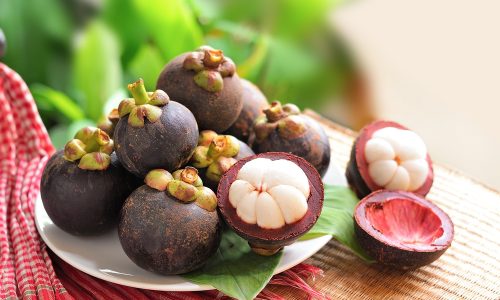
This beautiful purple fruit is originally from Southeast Asia, but now flourishes in various tropical regions around the world. When ripe, mangosteen is deep purple in color, a direct contrast from its bright white flesh. The fruit itself is sweet, and people often describe the flavor as a combination of banana and peach.
Cherimoya
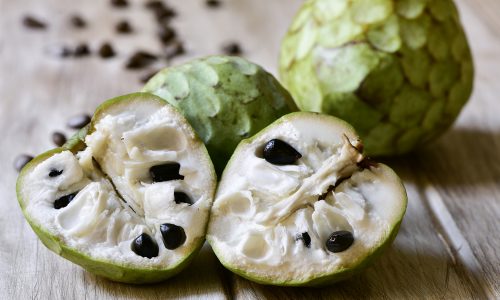
Cherimoya, also known as the custard apple, was once the staple of the ancient Incans. Though its scaly exterior looks tough, its insides couldn’t be more different! Cherimoya has a thick and creamy flesh that tastes like a cross between pineapple and banana. The fruit is so thick that the consistency is like custard! Cherimoya is native to the northern countries of South America, but overtime has spread to parts of Central America.
